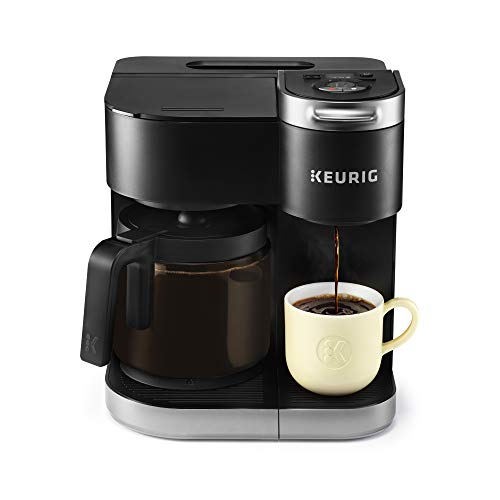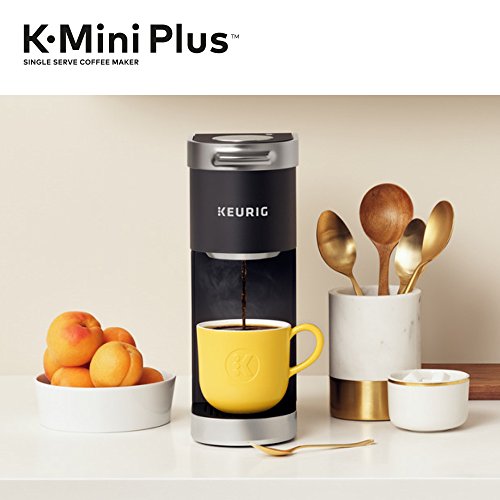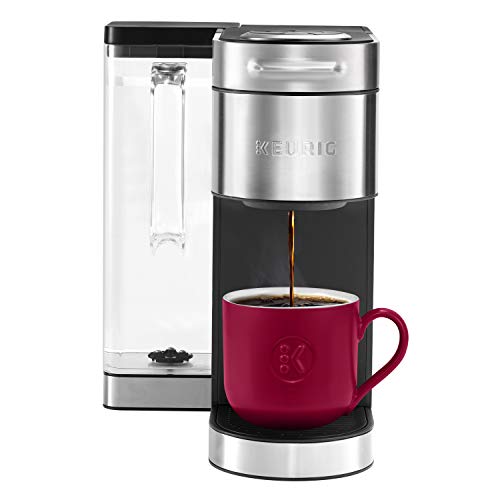A very important thing to consider before you get a single-serve coffee maker is its lifespan. It is only natural that you don’t want to give in to a coffee maker’s popularity when buying it; you want to be certain that it will last long enough, being worth every penny that you paid for it.
Keurig coffee makers are very popular, but how long does a Keurig last?
 The approximate lifespan of a Keurig
The approximate lifespan of a Keurig
Keurig’s staff members have stated that their coffee makers are made to last for many years. They haven’t, as far as we know, given a definitive answer for how long a machine should last; with the many factors impacting a model’s lifespan, however, ‘many years’ sounds like a good approximation.
However, we wanted to take things a bit further and do our own research on the topic. We dedicated ourselves to thorough research to find valuable information about a Keurig’s approximate lifespan.
Of course, not every Keurig is the same; there are differences between models’ designs, features, and prices. However, based on the data we could find, customers who’ve used a Keurig confirm that their coffee makers lasted for about five or six years. It’s normal that others will say that their models lasted two years, eight years, or maybe more than 10 years; the answers given will vary. However, the average answer is ‘five years’ or ‘six years.’
The good approximate lifespan of these coffee makers doesn’t mean that people experience no problems with their Keurigs. They certainly do, but, in most cases, the issues are easily fixable.
So, can your Keurig last for 10 years? Well, remember Keurig’s stance on the topic: it can, but you’ll need to properly maintain it.
Below are some tips on how you can maintain your Keurig and enjoy it for longer.
Listen to what Keurig has to say!
The most important thing you can do to keep your Keurig going for longer is to follow Keurig’s maintenance recommendations. More than that, you should take your user’s manual out of the box and read it page by page. In it, you will find specific advice on how to maintain your model and why you might be experiencing certain problems with the coffee maker. We also recommend you check out the FAQ section on Keurig’s site to understand how to properly maintain your machine.
 Things that can help your Keurig be ‘healthy’ for a long time
Things that can help your Keurig be ‘healthy’ for a long time
From the many things that Keurig recommends, we consider the following to be the most important ones:
Filtered or bottled water
Using filtered water in the water tank of your Keurig is the most basic care practice. This applies to every single Keurig, including to the best of these brewers, and the reason for this is simple: filtered water and harmful minerals don’t go hand-in-hand. Filtered water is the reason why a lot of calcium won’t deposit inside the pipes of your coffee maker. Lower mineral content on the pipes will, furthermore, decrease the need for descaling.
On the other hand, a lot of minerals inside the pipes could ‘hurt’ your Keurig; the coffee won’t pass through the pipes nicely and the machine will struggle to finish its brew cycle. If this happens frequently, it can ultimately lead to the failure of a Keurig.
Descaling regularly and with a descaling solution
What the word ‘regularly’ means for you will largely depend on the contents inside the water you’re using. We already talked about filtered and bottled water, which are the types of water that will help you descale your Keurig less.
If you use filtered or bottled water, you should descale the machine every three to six months. However, you can descale more often if the water you’re using has a lot of minerals. Also, keep in mind that Keurig coffee makers alert you when it’s time to descale them based on how much water has passed through the brewer. Still, you can descale your Keurig more often if you believe you should.
Water in the tank, coffee in the brew chamber
You should not be putting milk or other liquids inside a Keurig’s water reservoir, nor should you use substances that are not coffee in your My K-Cup filter. The same ‘rule of exclusivity’ applies to coffee pods since you should not use coffee pods that are incompatible with your coffee maker.
Even though there are differences in the pod compatibility between Keurig 1.0 and 2.0 models, you should never try to trick your brewer into working with a pod that won’t fit. Needless to say, if you do this, you’re running a risk of damaging your Keurig.
 Clean the removable and non-removable parts of your Keurig
Clean the removable and non-removable parts of your Keurig
Cleaning your Keurig’s parts will protect them from getting damaged and improve the ‘health’ of the brewer. You can clean the removable parts by washing them. Of course, don’t forget to dry them later since you don’t want mold to build up inside your coffee maker.
Non-removable parts are supposed to be cleaned with a damp cloth, but do this carefully. Also, flush your Keurig from time to time so that any coffee residue gets removed from the pipes of the coffee maker. Whichever component you’re intending to clean, make sure that your Keurig is turned off and unplugged!
To replace your Keurig or not?
Before you decide whether to replace your Keurig or just repair it, we recommend you contact Keurig and share the problem you’re experiencing with the coffee maker. Ask if there’s anything they can do to fix the problem and how much the repair will cost. You might consider repairing your coffee maker if you bought it for a lot of money or if your warranty has not yet expired. However, consider answering the following questions before you make your decision:
- Has your Keurig stopped brewing coffee?
- Do you want a new Keurig that can offer more than your current coffee maker can?
- Is the coffee maker having difficulties heating water?
- Do you find yourself in a situation where it’s too hard to find pods compatible with your Keurig?
- Do you need a Keurig that can make more coffee at once?
Conclusion
We hope that you found our article useful. If you want to discover what the best Keurig for you is, read our ‘Which Keurig Should I Buy’ article. We wish you happy coffee times with your next Keurig!



After descaling thoroughly, the descaling light won’t go out. It,s frustrating